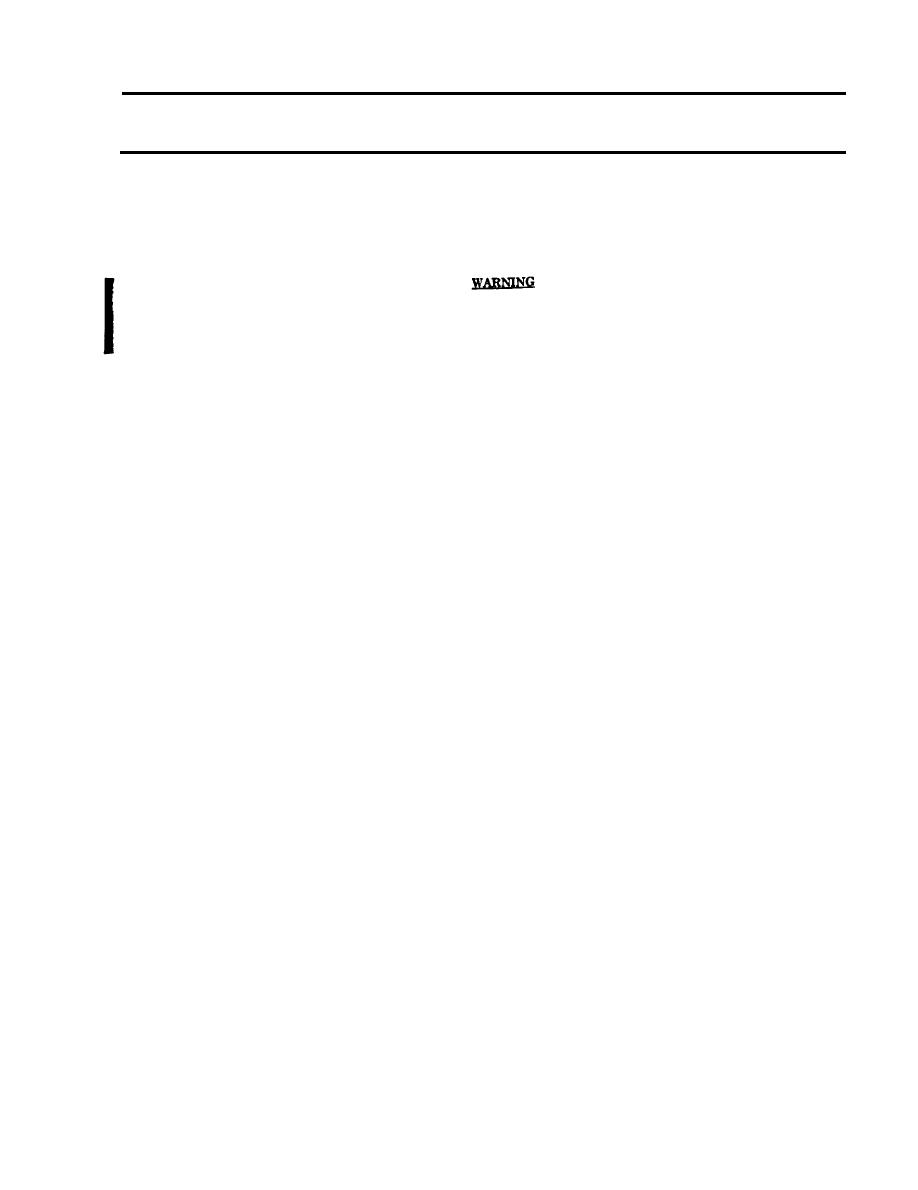 |
|||
|
|
|||
|
Page Title:
Table 3-2. Operator/Crew Troubleshooting |
|
||
| ||||||||||
|
|
 TM 10-3930-242-12
Malfunction
Test or inspection
Corrective action
1. ENGINE FAILS TO START
Step 1. Check for hose, corroded or damaged battery cables and connection. Clean corroded cables. Tighten loose connections
and report damaged cables to organizational maintenance.
Step 2. Check to be sure that engine shut-off is pushed down and that lever at the governor housing is in the start position.
Adjust cable as necessary.
Step 3. Check to be sure the emergency stop is in operating position at the engine blower.
Reset if required.
If NBC exposure is suspected, all air filter media should be handled
by personnel wearing protective equipment. Consult your unit NBC
Officer or NBC NCO for appropriate handling or disposal procedures.
Step 4. Check for air cleaner intake restrictions.
Correct as necessary.
Step 5. Check for empty fuel tank.
Fill as required.
2. ENGINE OPERATES ERRATICALLY
Step 1. Check for clogged air cleaner.
Have air cleaner serviced.
Step 2. Check for condensation and fuel contamination.
Drain condensation from fuel filters before engine. Report evidence of fuel contamination to organizational main-
tenance.
Step 3. Notify supervisor and organiazational/direct support maintenance to check governor gap.
3. ENGINE LACKS POWER
Step 1. Check for clogged air cleaner.
Have air cleaner serviced.
Step 2. Check fuel fiiters for contamination.
Drain condensation from fuel filters before starting engine. Report evidence of fuel contamination to organizational main-
tenance.
Step 3. Notify supervisor and organizational/direct support maintenance to check fuel rack and govenor operation.
4. ENGINE OVERHEATS
Step 1. Check radiator for low level of coolant.
Allow engine to cool and fill with coolant.
Step 2. Check fan belt for looseness.
Report a hose or damaged fan belt to organizational maintenance.
Step 3. Check radiator for free airflow.
Clean radiator fins if required.
5. ENGINE EXHAUST SMOKE EXCESSIVE
Step 1. Check for clogged air cleaner.
Have air cleaner serviced.
6. ENGINE OIL CONSUMPTION EXCESSIVE
Step 1. Inspect engine compartment for oil leaks.
Do not continue operation if oil leak is likely to reduce engine off below a safe operating level. Report leaks to organisational
maintenance.
7. STEERING ERRATIC
Step 1. Check for rear steering cross-shaft binding in tube.
Do not continue operation if the erratic stearing constitutes a threat to personnel or may result in equipment damage. Report
to organizational maintenance.
Step 2. Check for low level of hydraulic fluid.
Report low hydraulic fluid level to organizational maintenance.
8. BATTERY FAILS TO MAINTAIN CHARGE
Step 1. Check for low level of electrolyte.
Fill battery with distilled water.
Step 2. Visually inspect battery for damage such as loose terminal posts or warped internal plates.
Report unserviceable batteries to organizational maintenance.
|
|
Privacy Statement - Press Release - Copyright Information. - Contact Us |